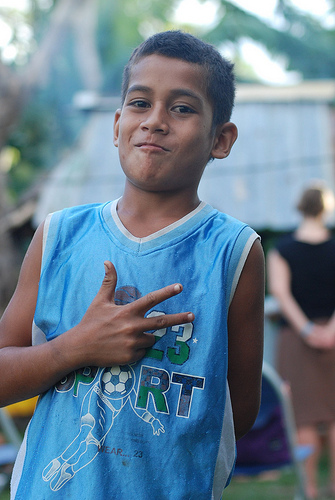 Merriam – Webster defines Special Needs as “…a disadvantaged background or a mental, emotional, or physical disability or a high risk of developing one.” For the purposes of adoption, the term special needs can also include children of specific ages or gender that make it more difficult to find families interested in adopting them. As an example, children age five and over are considered to be in the special needs category. Why? The answer is most families want to adopt a child as young as possible. Once a child turns five their chance of being adopted drops drastically. As the child gets even older the chances of the child being adopted continues to drop. Some agencies consider boys to fall into the special needs category as well because the majority of families request female children. All countries have children who fall into the special needs category.
Merriam – Webster defines Special Needs as “…a disadvantaged background or a mental, emotional, or physical disability or a high risk of developing one.” For the purposes of adoption, the term special needs can also include children of specific ages or gender that make it more difficult to find families interested in adopting them. As an example, children age five and over are considered to be in the special needs category. Why? The answer is most families want to adopt a child as young as possible. Once a child turns five their chance of being adopted drops drastically. As the child gets even older the chances of the child being adopted continues to drop. Some agencies consider boys to fall into the special needs category as well because the majority of families request female children. All countries have children who fall into the special needs category.
On my trips to Samoa I had the pleasure of spending time with several children considered to have special needs. Samoa’s largest group of children considered special needs fall into the age five and over category. Visiting with these children, whether in the Democratic Republic of Congo or Samoa, always breaks my heart. I look at these children, play with these children, see their potential for love and their need for a forever family – a family who will nurture them, love them, provide for them, allow their potential to blossom, and help them grow into a productive member of society. I look into their eyes and see the innocence of a child. While these children are well cared for in Samoa, the fact remains, that every child deserves a family. The truth is a family is always a better place than institutionalized care.
Special needs common in Samoa include the following:
- HIV positive children
- Blindness/Deafness
- Cerebral Palsy or other genetic diseases
- History of abuse
- Older Children ages 5 and up
Currently we have a long list of children ages 4-14 waiting to be matched with a forever family through international adoption. Additionally we know of two children with Cerebral Palsy who are waiting for a family willing to love and care for them. The sad truth is that very few will consider adopting these children and they will remain in institutionalized care until they age out of the shelter. The stark reality for these children is we will never know their true potential.
During National Adoption Awareness month we celebrate those families who open their hearts and their homes to these children with special needs. Not only are they willing to welcome a child into their family through international adoption, but these families take it one step further and provide homes to children other adoptive families will not consider. Understandably many families feel that adopting a child with special needs is too much, and they feel they cannot handle the additional cost and additional stress on their emotions. But for those families who are willing to accept this added contingency – our hats off to you.
For information about grants available to help you adopt a child with special needs, please consider attending one of our free Affording Adoption seminars or contact Camie directly. For more information about children waiting for adoption due to age, siblings, minor health concerns, major health issues, etc., please contact Amy. She maintains information on children waiting for a loving family in all of our international adoption programs.
Photo Credit: Ben
